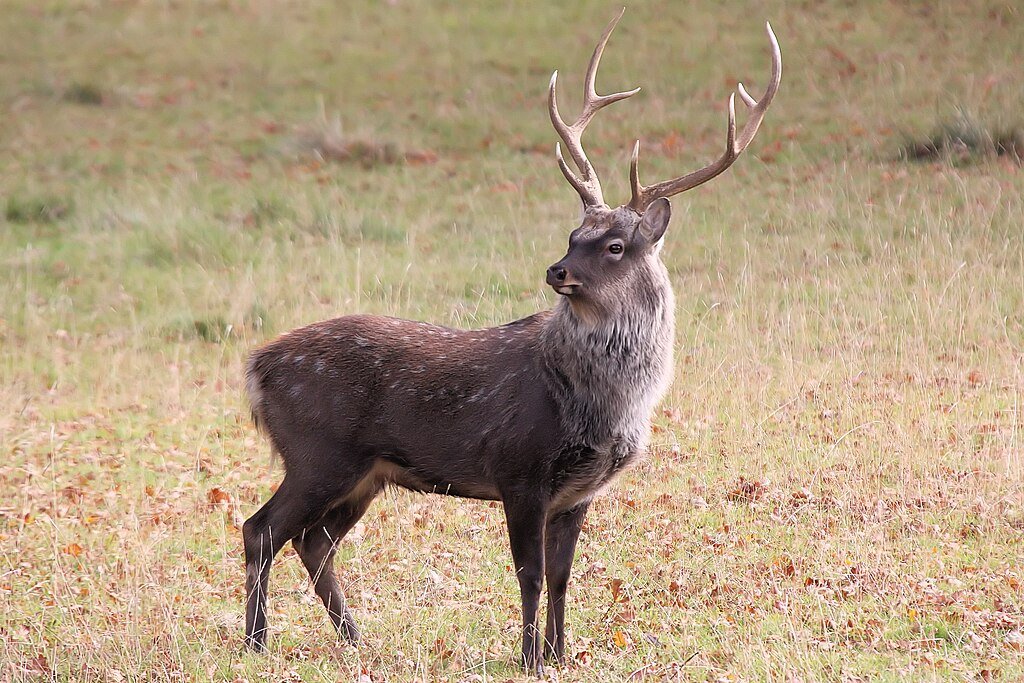Sambar deer, also known as Rusa unicolor, is a fascinating species that inhabits the dense forests and grasslands of Asia. These remarkable creatures have captured the hearts of many nature enthusiasts with their unique traits and behaviors.
SPECIES DATA
- Class: Mammalia
- Order: Artiodactyla
- Family: Cervidae
- Scientific Name: Rusa unicolor
- Life Span: 15-20 years
Description
The Sambar Deer, scientifically known as Rusa unicolor, is a remarkable species of deer found in various parts of Asia. These magnificent creatures are known for their sturdy build and impressive size, making them one of the largest deer species in the world.
Appearance
Sambar Deer are characterized by their dark brown to grayish-brown fur, which provides excellent camouflage in their forest habitats. They have a distinctive, shaggy mane on their neck, and both males and females possess impressive, rugged antlers. These antlers can grow up to 43 inches in length.
Behavior
Sambar Deer are primarily crepuscular, meaning they are most active during dawn and dusk. They are generally solitary animals and prefer the cover of dense forests to avoid predators. When threatened, they emit loud alarm calls to warn others in their group.
Habitat
Where do sambar deer live? These deer species inhabit a wide range of ecosystems, including tropical rainforests, swamps, and grasslands. They are highly adaptable and can thrive in diverse environments across their range.
Diet and Nutrition
What do sambar deer eat? Sambar Deer are herbivores, primarily feeding on a diet of grass, leaves, fruits, and various plant materials. Their large size allows them to consume a significant amount of vegetation to meet their nutritional needs.
Mating Habits
Sambar Deer typically mate during the monsoon season. The males, known as stags, compete for the attention of females by engaging in fierce battles using their antlers. Once a male wins the competition, he mates with several females.
- Mating Behavior: During the mating season, males engage in vocalizations and physical displays to establish dominance and court females.
- Reproduction Season: Mating typically occurs from September to January.
- Pregnancy Duration: Female sambar deer have a gestation period of about 8 months.
- Baby Carrying: After giving birth, mothers hide their calves in dense vegetation for protection.
- Independent Age: Calves become independent at around 7-10 months.
- Female Name: Doe
- Male Name: Buck
- Baby Name: Fawn
5 Fun Facts for Kids
- Sambar Deer are excellent swimmers and are often seen crossing rivers and lakes.
- They have a unique behavior called “wallowing,” where they roll in mud or water to cool off and remove parasites from their fur.
- Sambar Deer are an essential prey species for large predators like tigers and leopards.
- They have a distinctive “white rump” marking, which is a characteristic feature of their appearance.
- Sambar Deer have keen senses of smell and hearing, helping them detect predators in their forest homes.


